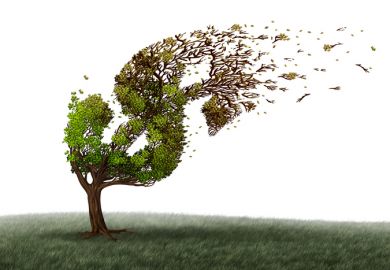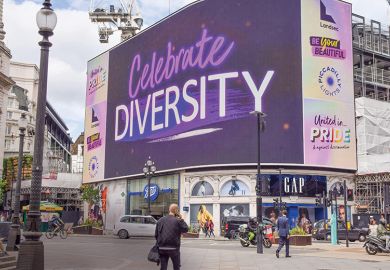Artefacts of Qing emperors reveal inner fantasies and outward projections of political and cultural power, finds Oliver Moore
The Royal Academy was founded partly as a result of Britain's fascination with portraits. In 1788, when Sir Joshua Reynolds prophesied that most contemporary Italian painters would soon become obscure names, he comprehended a new British (and by then decidedly un-Italian) rage for portraiture that sustained much of the European art world.
Three Qing emperors - the Kangxi Emperor, the Yongzheng Emperor and the Qianlong Emperor - residing in one of London's great 18th-century institutions could therefore hardly be more appropriate. The present show of art from China, spanning the reigns of a grandfather, father and son during the "long" 18th century of the Qing dynasty (1644-1911), is interesting for its portraiture in several senses. It includes not only the imperial face of power for (limited) public show, but also more private fantasies of personal appearance. Different social constituencies were co-opted in various images to stand or ride alongside the metaphysical royal body. Even calligraphy, according to its theorists, was an art that communicated key traits of the writer's personality. And the collection and reproduction of art objects were further projections of the self through which Qing emperors made perhaps unparalleled cultural and political play.
Aside from the emperors' own productions, some exhibits are by Jesuit painters whose Italian names it might have surprised Reynolds to learn are not obscure in China. Art and science at the Qing court were nothing if not international.
This catalogue of the exhibition is a visually satisfying and informative publication on a scale recalling the RA's recent exhibition of Turkish art.
Its contributors are experts in the art that the three Qing emperors possessed or manipulated in the various theatres of their political and religious commitments. Their erudition targets closely the exhibition's artefacts, yet the presentation is untrammelled by any overload of specialist connoisseurship. This welcome balance is no doubt due to Evelyn Rawski and Jessica Rawson's editing, not least to Rawson's commitment to giving objects a central role in historical discourse on China.
The essays cover imperial and secular image-making, calligraphy, art patronage, ritual, religion, palace architecture, territorial expansion and diplomacy, and discuss the lives of the three imperial subjects. Any of this work could be profitably employed in undergraduate and school work variously devoted to imperial China, knowledge of China in Europe and vice versa, as well as the art history of both places.
Some Qing art seems familiar. The nearly life-size equestrian portrait of Qianlong (who reigned in 1736-95), perhaps by the Italian painter Giuseppe Castiglione, recalls Van Dyck's Charles I and Titian's Charles V . This imposing image, hanging midway through the exhibition, is an excellent "way in" to the catalogue essays, which severally recall that the Qing rulers projected themselves as the inheritors of an equestrian culture of the northern steppes. Minimally distracted by the task of conquering China and an equally large portion of Central Asia, these invaders invented their own Volk and a distinctive script, naming both Manchu. Even long after they had made Chinese culture part of their own, the Manchus still undertook ritual and social enterprises that set them apart from the society over which they consistently imaged themselves as overlords. Hunting, camping and hauling baggage over a vast terrain each year were key activities in this process.
Is it not in this light that Qianlong's portrait shows him equipped with bow and arrows but no sword? The painters and their subjects were reticent when it came to the more violent symbols of conquest, preferring to show a huntsman dressed up as a general. Arms were certainly made for the emperors, and the exhibition features four of Qianlong's swords in a case to the right of his portrait, a London arrangement that states an interesting divergence between the material dimensions and visual practices of Qing court life.
Superficially, the successive engagements of Qing rulers with Manchu and Chinese culture seem homogeneous. Perhaps this was because the fathers and sons of the Qing succession knew each other better than earlier imperial arrangements permitted. Rawski points out that Manchu princes all grew up in Beijing. This broke with the tradition of Ming rule (1368-1644), when princes had been strategically isolated in the empire's various provincial capitals. A simple rearrangement, yet a profound one, for it explains that the unusual scene of Qianlong and his children was not painted simply to indulge a paternalistic whim. The scene may have been "fictional", yet its emotional impact is utterly plausible and a far cry from the alienation of Ming royal family life.
How the Qing emperors were more usually seen and, just as properly, not seen was staged mostly outside the palace and the capital. The exhausting business of procession was crucial to manufacturing the Qing royal image, and was also adopted as a subject of visual representation. Bewilderment buzzes throughout the exhibition's first main gallery, which displays four long scrolls of momentous royal journeys: "Where is the emperor?" visitors ask, vexed and adrift. Few of these works have been published because their dimensions defy easy reproduction. Many visitors will suffer the classic discomfort of trying to understand a foreign ritual without access to the key. Procession scrolls, in particular, are visual documents of major historical moments, but they demand a degree of cultural competence that only intensive labelling and translation can provide. The exhibition and the catalogue perform this task unevenly, no doubt because of the difficulties that beset cataloguing the objects of distant loans. Even those viewers who can find Qianlong's shuttered palanquin in the procession for his 80th-birthday celebrations will fail to identify the king of Annam kneeling on the wayside unless they read the many inscriptions. While allowing for the difficulties of representing visual narratives up to 60m long, the lenders and borrowers of the birthday scroll have lost the opportunity to gloss a carefully staged diplomatic tableau. Not only is the sight entertaining, but King Anh packed his best red dragon robe for a trip to Beijing in 1790 only three years before Lord Macartney's British Embassy arrived. The scroll gives a glimpse of Qing expectations of foreign royals'
and dignitaries' behaviour. Macartney's inability to grasp this sort of theatre has become legendary.
Several essays emphasise how often the emperors equated the cultural with the economic. Their priority was not the modern display - a loan from the People's Republic being a case in point - since they reserved artefacts for the imperial gaze and not for a museum public. Yet Qing rulers seem to have been seduced not only by textures, colours and feats of the pictorial imagination, but also by processes of creation and the economic organisation required to keep manufacturing industries viable. The emperors were eccentric in maintaining palace workshops close to their living quarters, permitting them to become involved with technical and aesthetic issues at a level matched by few other rulers of China.
Objects are also referents to interior lives. What this exhibition reveals most successfully is three subjects' distinct gravitations to the material culture that they commissioned and created. Perhaps the most fascinating revelation is Yongzheng (who reigned in 1722-35). He was 44 upon his enthronement, by which time he had exerted himself to become the Qing succession's most committed art lover. Yongzheng equated culture with the erotic. The Twelve Beauties that he admired as a young man, and conserved after it had become indecent to display them, show men's quarters filled with favourite antiques and furniture, animated in each scene by a sole female visitor dressed in costumes recalling the Ming, a bygone age of sensual pleasures. On the walls and in the hands of these women are texts connoting Yongzheng's twin fascinations with the past and his own condition: an inscription by the Ming founder; a text by Dong Qichang (1555-1636, often cited as a major influence on Qianlong); and then Yongzheng's own compositions signed with his sobriquet "Dweller in the Broken Cliff" - a self-image made visually explicit in another portrait of the emperor dressed up as a monk.
These interiors and their guests depict refuges where the physical senses mix with surface appearances and a reading of Chinese civilisation far deeper than any royal Manchu forebears had managed to achieve. If Qing culture can be condensed within the frame of one (royal) individual, Yongzheng symbolises a turning point. Kangxi may have insisted on a portrait of himself at the writing table, but he showed none of the psychological complexity that Yongzheng expressly ordered painters to adopt as a subject for representation. Telling, too, is Yongzheng's strong and flexible calligraphy, far excelling the perceptibly laboured efforts of his father's. Eventually, Yongzheng's successor, Qianlong, would write on absolutely everything, adding up to a mass that, along with thousands of images and objects, helped him to usurp his father's position as the dynasty's greatest art patron.
Indeed, a Qing exhibition staged solely on the shoulders of Qianlong is always feasible. By contrast, the outstanding contribution of The Three Emperors is to break apart the closed, stultifying view of Qianlong as the towering symbol of Qing achievements, and to show that the Manchus'
specific acculturation to their rulership in China depended on more than one lifetime, more than direct copying and more than just the political expediency of outward show.
Oliver Moore is lecturer in art and material culture of China, Leiden University, The Netherlands. China: The Three Emperors is at the Royal Academy until April 17.
China: The Three Emperors, 1662-1795
Editor - Evelyn S. Rawski and Jessica Rawson
Publisher - Royal Academy of Arts
Pages - 494
Price - £55.00 and £.95
ISBN - I 903973 69 4 and 70 8
Register to continue
Why register?
- Registration is free and only takes a moment
- Once registered, you can read 3 articles a month
- Sign up for our newsletter
Subscribe
Or subscribe for unlimited access to:
- Unlimited access to news, views, insights & reviews
- Digital editions
- Digital access to THE’s university and college rankings analysis
Already registered or a current subscriber?



